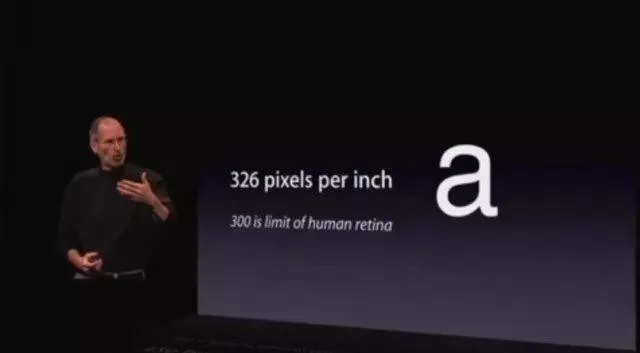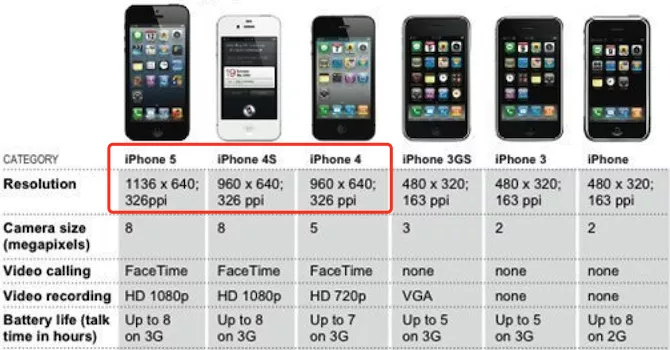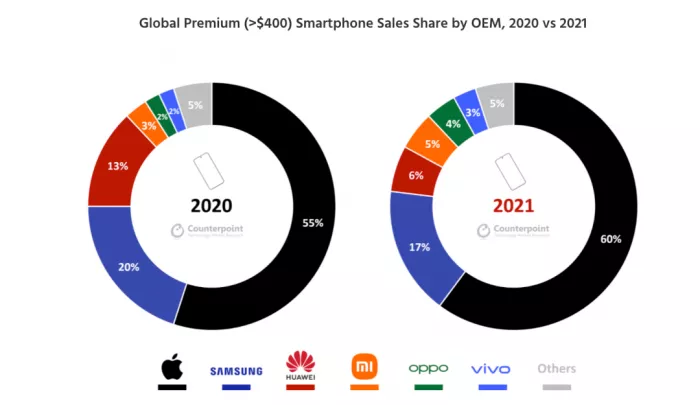A few days ago, I chatted with my colleagues in the office and talked about the development of mobile phones Then I found a problem. At present, the flagship models of domestic mobile phones are basically used to claiming that they are 2K screens (3216x1440) Such as realm GT2 pro, Xiaomi 12 pro, one plus 10 pro and oppo find X5 pro.
I glanced at Apple. According to these domestic manufacturers, the screen resolution of iPhone 13 Pro Max is only 2778x1284, which has not reached the 2K range in their eyes.

How do I say this? Friends and businessmen roll up and fly up. You don't even have a "2K" screen, and you deserve to call it high-end?
It's just that users seem more and more picky in recent years, but not many people criticize the iPhone's screen configuration, so does the iPhone really start to rot in recent years?

In my opinion, apple doesn't want to play concept with Android manufacturers at all.
There are three main reasons. Let's talk about the first one first.
First of all, in terms of screen parameter standards, the two camps value different directions
As I said before, whether the screen is delicate or not is not determined by the factor of resolution. At the same resolution, the final results of different sizes and pixel densities are also different.
Perhaps some poor friends have noticed that "XXX PPI" will be written in the screen parameter table of some mobile phones, which generally appears together with the resolution.

PPI is the pixel density, which represents the number of pixels per inch of the screen. The higher the value, the finer the picture.
There is a simple calculation formula, for example:
A 6.67-inch 1920x1080 screen with a PPI of about 330; If you change to the 2K screen (3216x1440) of domestic manufacturers of the same size, the PPI should be about 528.

This is also one of the reasons why the higher the resolution, the better the image quality in conventional cognition.
But unlike the iPhone, they are used to using pixel density as the standard setting screen, rather than the overall number of pixels related to resolution.
When jobs released the iPhone 4 that year, he put forward a concept:
They put 960x640 pixels in a 3.5-inch screen, making the pixel density of the screen reach 330 PPI

IPhone 4 launch
Then say that for mobile phones, within the normal viewing distance, the screen pixel density can reach more than 300 ppi, and the human retina can't distinguish the pixels.
This high-resolution screen, which exceeds the recognition limit of human eyes, is the beginning of the commonly known "retinal screen".
Since then, Apple's product screens of all generations have remained above 326 PPI, and formed its own product standard.

This was hard for the Android camp at that time. They had to harden their scalp and iterate the products that did not meet the retinal screen standard to 1080p to stabilize the situation.
Later, the mobile phone screen developed from LCD to OLED, and apple set the pixel density standard (458 PPI) that meets the OLED screen, which has been adhered to so far.

LCD pixel arrangement and OLED pixel arrangement
But here's the problem. As we all know, Android phones of the same level are usually wider than apple. Therefore, with the same resolution, the pixel density of Android is bound to be lower than that of small-size iPhone.
Just like there are 50 children on both sides. One side (Android) has classes in a 100 square meter classroom and the other side (Apple) has classes in a 50 square meter classroom. Which side has a higher density of students is obvious and easy to see.
In this case, Android can only improve the resolution if it wants the parameters of PPI to be no worse than apple and the size can not be reduced
Add, you can add.
With a big hand from manufacturers, the 2K road of Android flagship mobile phones began. Even in the early years, even some major mobile phone brands with a cost-effective price of less than 2000 yuan wanted to join the fun.
Just to say, this wave is almost asking for trouble. In fact, Android can play its own game. It's just that it's in a hurry to get on Jobs's "thief ship".
If you have to compare with apple, you don't have 2K screen because it's really not enough.
However, in the following years, the Android camp's mobile phones moved forward with their heads held high, and the situation has quietly reversed. In terms of pixel density, most manufacturers have caught up with or even surpassed apple. For example, Xiaomi 12 pro (522 PPI), one plus 10 pro (525ppi), etc.
But the iPhone 13 Pro Max still adheres to the 458 PPI standard, which is even worse than his little brother.
Clearly Apple first proposed the standard concept of pixel density. Why did Android surpass it instead of making progress in recent years?
This is the second reason I want to say: this thing is not so necessary.
Because the relationship between PPI and display effect is not completely linear. For example, from 200 PPI to 326 PPI, the change reflected in the visual experience is very obvious.
It's like the sudden change of 720p video to 1080p is like opening a new world.

However, the more this parameter goes up, the direct change range of perceived experience will gradually decrease.
Like oppo find X5 pro and iPhone 13 Pro max, the 525ppi of the former is much higher than the 458ppi of the latter, but we can't feel a very obvious improvement when we look at them from a normal distance.

Although I know that oppo may be better in terms of the fineness of the picture. But for, as long as there is no obvious sense of particles, daily use does not feel much impact.
Unless you put the screen in front of you, observe it a little carefully, or enlarge the screen more than ten times, you can see the difference naturally. If you are a normal person, no one will use your mobile phone like this
Moreover, there is no need to increase the number of screen pixels, which will also increase the power consumption of the mobile phone. The battery life of Apple's mobile phone is not an advantage subject. Why are you in a hurry to find it.
In addition, the third key reason is that apple is too unique.
In the current high-end flagship mobile phone camp, iPhone is still the only one. However, other manufacturers can only take other ways if they want to challenge the iPhone.

What photography, fast charging, battery capacity and screen quality have become the track of "overtaking in corners", so I have been exhausted before I can pull apple off my horse in recent years.
Android: I can't do without the configuration that friends and merchants have. Otherwise, it's a dead end if I don't sell it or ship it.
Apple has no such burden.
For apple, they are not willing to pay more for something that is "enough and does not affect sales".
I even feel that consumers are probably used to this stingy strength. Even if some configurations other than chips are now slightly insufficient, some people are still willing to pay.
When Android changed its OLED screen, iPhone still insisted on LCD screen. Don't you charge for customizing the screen? Does it cost nothing to adapt the system again?
People can even save the cost of charger, not to mention the large expenditure of mobile phone screen?
But Android is different. They are used to changing ways to improve their competitiveness.
Of course, when we talk about this topic, we are also discussing it ourselves. Is it possible that the so-called 2K mobile phone screen concept is a yangmou designed by Android manufacturers?
For example, "what is 2K?"
According to the industry standard of film and television, 2048x1080 belongs to 2K under the full frame.
From this standard, apple phones have long used 2K screens

Even if we only need to lengthen Huawei's 1920x1080 screen, they are also complete 2K screens.
But does this really seem to be inconsistent with people's conventional cognition? The problem is that even the manufacturers themselves have not formed a unified resolution standard.
For example, the resolution of Sony Xperia 1 III (3840x1644) is 4K, but neither horizontal nor vertical pixels can meet the standard of 4000 pixels.
We might as well be a little more simple and rough. In the conventional cognition, 1440p (2560x1440) belongs to 2K.
Roughly, the number of pixels is 3686400, and the number of pixels of iPhone 13 Pro Max is 3566952.
In the tens of millions of figures, the change of only 100000 + is hard to believe how much impact it has, and it is hard to say that it can not reach the 2K level.
So it seems that the 2k and 2.5k screens repeatedly publicized by domestic manufacturers are more like a marketing concept conducive to themselves
I think that compared with the standard of resolution, this standard is complex, and it also involves the definition of different screen proportions, pixel arrangement and other factors. Choosing PPI as the screen standard of our own products has become the safest and least controversial practice.
After all, when the size is the same, the larger the PPI number itself, the better. Play concept? In fact, apple is the real expert.